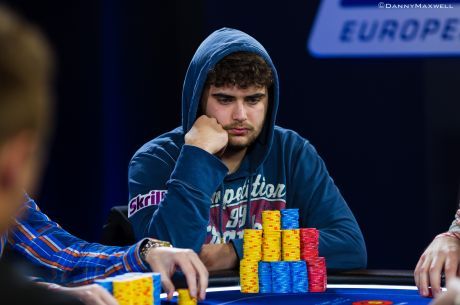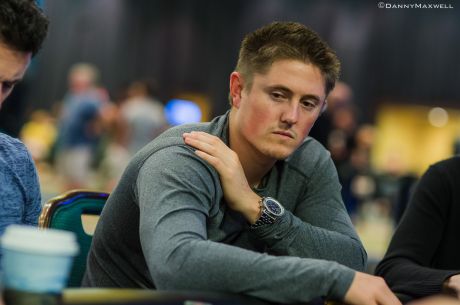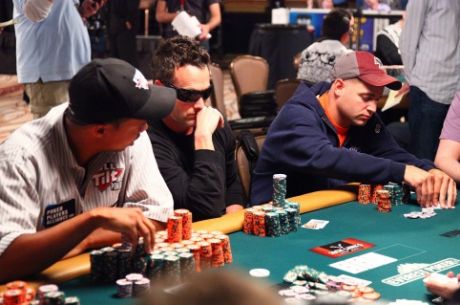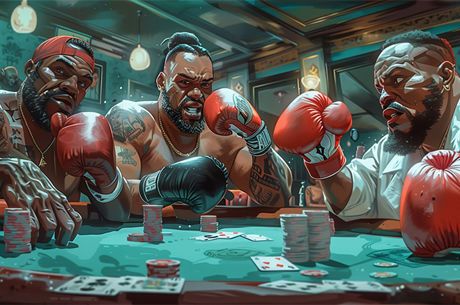The Dangers of Opening Light from Early Position
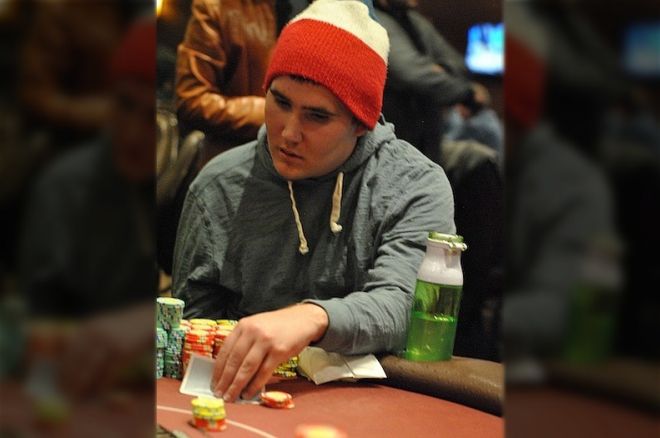
Covering live poker tournaments for a living affords me the opportunity to see countless thousands of hands played out, many of which offer interesting and potentially valuable insights into how players — both amateurs and professionals — play the game. In this ongoing series, I’ll highlight hands I’ve seen at the tournaments I’ve covered and see if we can glean anything useful from them.
The Scene
It’s near the beginning of the final table of the 2015 Mid-States Poker Tour Golden Gates Main Event in Black Hawk, Colorado, with one player having already been eliminated to leave the remaining players eight-handed. The blinds are 25,000/50,000 with a 5,000 ante. The next player eliminated will get $11,503, while the winner will pocket a little over $100,000.
The Action
Kevin “Phwap” Boudreau (pictured above), sitting on a stack of about 2.4 million, opened from under the gun to 125,000. He was called by both the middle-position player Kane Lai, who was the chip leader with about about 4.5 million, and MSPT team pro Nick Pupillo, who had about 500,000 in the big blind.
The flop came down 10♦A♦6♠. Pupillo checked to Boudreau who fired a continuation bet of 250,000. Lai came along, and Pupillo got out of the way. The turn paired the board as the 10♥ fell, and Boudreau kept the aggression coming with another bet of 500,000. Lai called again. The river was the 8♣, and Boudreau paused a bit for the first time in the hand before firing a final bullet of 800,000.
Lai thought it over about 90 seconds before announcing a call, and Boudreau showed him 9♦6♦ for tens and sixes with missed diamonds. Lai tabled A♣Q♠ and took the pot, boosting him to more than 100 big blinds and over half of the chips in play.
Strengthened by that huge pot, Lai would go on to roll over the rest of the final table and take down the top prize, while Boudreau fell back to the pack and eventually finished seventh for just over $15,000.
Concept and Analysis
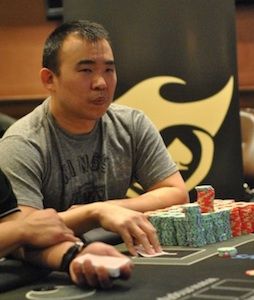
Preflop, Boudreau opens with a weak suited two-gapper under the gun. From Lai’s perspective, he’s seen a player who has established a loose and very aggressive image open from early position, so calling with A♣Q♠ is a fine option. He could three-bet since he’s likely ahead of Boudreau’s range, but flat-calling keeps Boudreau’s dominated holdings in and avoids bloating the pot against the only stack at the table that can deal him significant damage.
Once Boudreau has been called by two solid players and the flop brings him a pair and flush draw, the primary concern is how he’s going to play the hand against Lai, as he’s happy to get it in against a short-stacked Pupillo (who presumably would have shoved preflop if he had a good ace, anyway). Boudreau makes a standard continuation bet to try to take down the pot and is called by Lai, who continues to take a passive line. Raising would only serve to knock out Boudreau’s bluffs.
When the turn pairs the board, Boudreau faces an important spot in the hand. His continuation bet was called by a solid player (Lai) who did so knowing there was still a short stack left to act (Pupillo), meaning Lai probably has either a good draw or a made hand he’s comfortable getting it in with against Pupillo. That range is mostly ahead of Boudreau’s, and even the times his pair is good he’s probably against something like Q♦J♦ that has solid equity. That said, Boudreau certainly has tens in his range as well as big aces, so he can continue to represent a big hand credibly if he keeps betting.
Boudreau does choose to keep firing, and Lai calls again. Then given his last chance to give up on fifth street, Boudreau pauses and blasts out one more barrel of about 40 percent of the pot on the brick river. Boudreau has repped his hand credibly, but when you have a loose-aggressive image and the most obvious flop draws miss, most players aren’t going to fold top pair of aces with a good kicker to you.
Certainly, a player as skilled as Boudreau is capable of pulling off some moves and winning the pot without the best hand — something he shows when coming in with 9♦6♦. Many factors go into open-or-fold decisions preflop, including stack sizes and who is in the blinds, but this hand illustrates one of the downsides of opening light from an early position: you often end up with a mediocre holding that is difficult to play out of position.
Boudreau flopped enough of a hand to keep him in it, but as the pot continued to build, he found himself investing far more than he likely imagined he would with what was basically an under-the-gun steal attempt. In reality, Boudreau was probably better off just mucking this holding preflop given that he was second in chips by a wide margin and deep-stacked with the chip leader behind him. Of course, Boudreau’s super-aggressive play was how he got all those chips in the first place, and the flip side of the hand is that he’s putting a ton of pressure on Lai as the only player who can put a serious dent in his stack.
Still, next time you’re thinking about making an early-position move deep in a tournament, remember that even players as strong as “Phwap” can run into trouble in this spot.
Get all the latest PokerNews updates on your social media outlets. Follow us on Twitter and find us on both Facebook and Google+!

